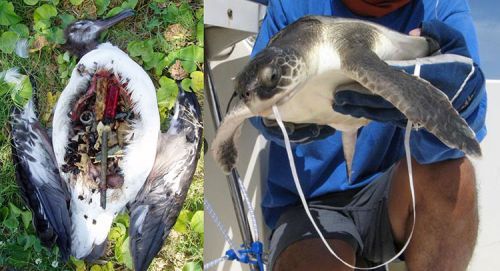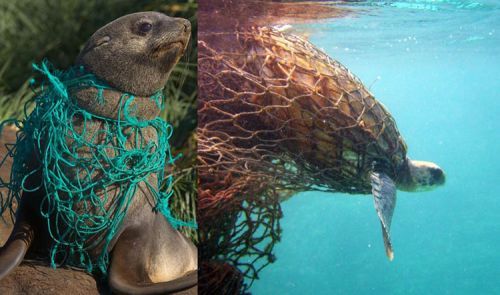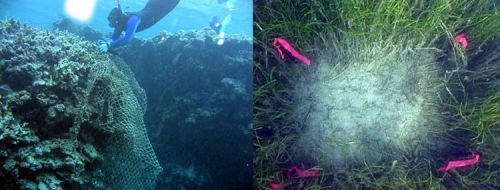How Marine Debris is Impacting Marine Animals
And What You Can do About it
Aug. 9, 2017 - Marine debris is one of the most widespread pollution problems facing our ocean and waterways today. This issue of solid, man-made materials in the ocean or Great Lakes is a global one that leaves no part of the world untouched by debris and its impacts.
These negative effects impact people on a daily basis, from economic losses to potential health hazards, but can impact marine animals most severely. Animals are impacted by marine debris in a variety of ways, including:
Ingestion. Marine debris can be ingested by animals that either mistake it for food or accidentally consume it along with their meal. This can create a lot of problems, ranging from mild discomfort to a dangerous blockage. Debris can fill up stomachs, causing an animal to feel full while depriving it of the nutritious meal it needs. In these cases, animals may starve with a full stomach.
Entanglement. Animals may become tangled up in marine debris and unable to free themselves. This can affect the animal in a variety of ways, ranging from mild discomfort to seriously impacting the animal’s ability to survive. Entangled animals may get abrasions from the debris, resulting in a dangerous infection. If movement is restricted, animals may not be able to feed and air-breathing fauna may drown if entangled underwater.
Habitat damage. Marine debris can also harm animals indirectly by impacting their habitat. Large or heavy debris may damage or smother sensitive habitats, such as coral reefs and sea grass.
Non-native species. Non-native species may hitch a ride on marine debris from one region to another. This might sound like a convenient way to travel, but if these introduced species become invasive, they can wreak havoc on an ecosystem by depleting food sources or destroying habitat. Thankfully, there is hope! Although debris is a big problem that has many negative impacts, it is also a completely preventable problem that we have the power to address.

The NOAA Marine Debris Program has many efforts underway to prevent and remove marine debris in order to reduce these harmful effects, coordinating with partners on local solutions to this global issue. Many other organizations are stepping up to do their part to address debris, from reducing their distribution of unnecessary single-use plastics to involving the community in caring for their local area.
You can get involved, too! Evaluate your habits and change those that may contribute to marine debris. Follow the “3Rs” and reduce, reuse, and recycle. An additional “R” to keep in mind is to refuse items you don’t need, like a plastic straw in your water glass. Spread the word to your family and friends so they can participate, too. If you’d like to get more involved, join a cleanup in your area (subscribe to our e-newsletter for a list of cleanups each month) or start one yourself and use the Marine Debris Tracker app to record your finds. Working together, we can make a big difference in the fight against marine debris.
To learn more about the NOAA Marine Debris Program’s efforts to remove and prevent marine debris, head to marinedebris.noaa.gov.
Read more stories in our series on the effects of pollutants on wildlife:
 An official website of the United States government.
An official website of the United States government. 

